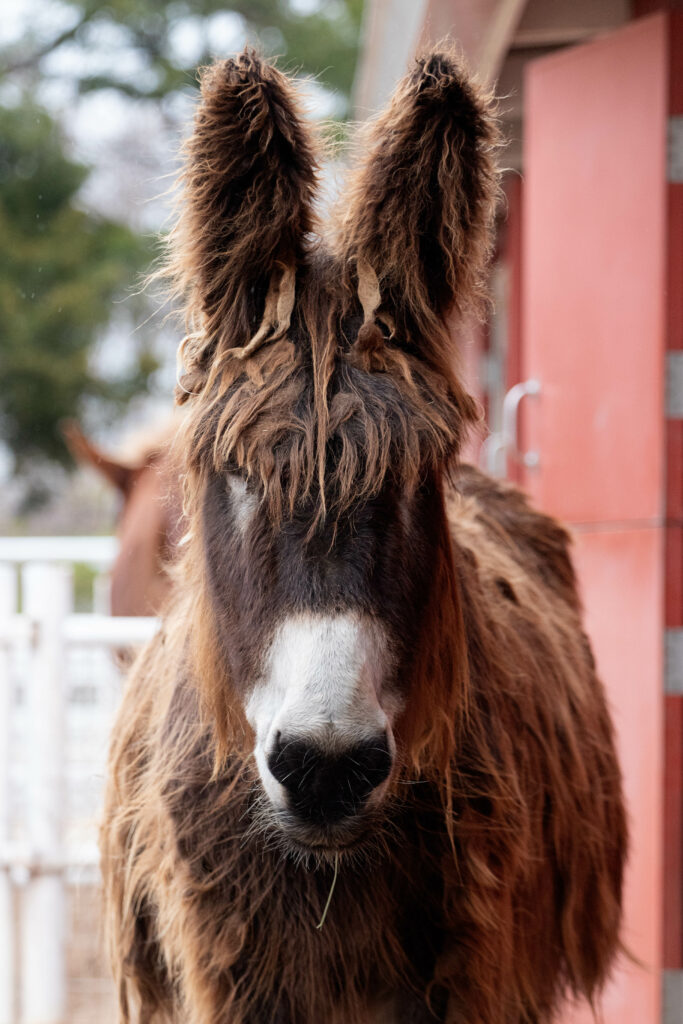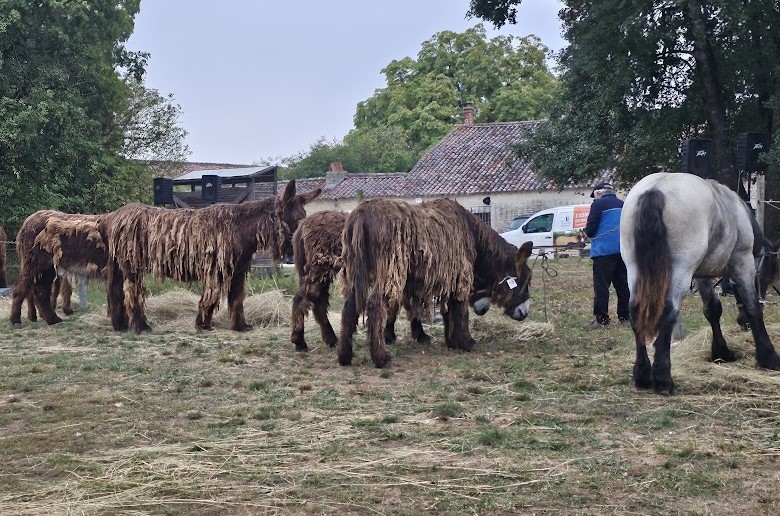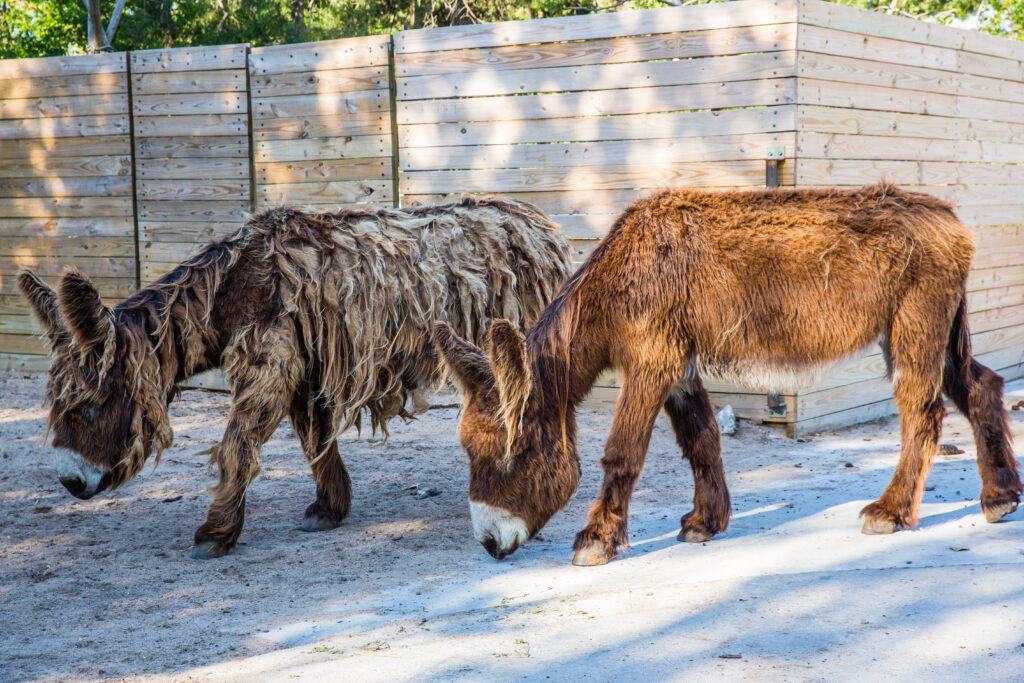When you hear that an animal is “Critically Endangered,” what comes to mind? A tiger? What about elephants? Maybe a few birds or amphibians and reptiles cross your mind.
When picturing an animal on the brink of extinction, the average person is going to picture more “exotic” and “wild” animals. When you picture “critically endangered” you probably don’t picture a donkey.
But the Poitou Donkey is a critically endangered heritage breed.
“You can look outside and see millions of cows, there are breeds of livestock that are more endangered than some of the exotic species that we typically think about when you talk about conservation,” Zoological Manager of Farms Callene Rapp said.

A heritage breed is a breed of livestock that developed before the mid-20th century, when agriculture became more heavily commercialized. The current industrial model of livestock often results in only certain traits being favored at the loss of others- for example, cows that can produce more milk, chickens that lay more eggs, pigs that are bigger.
Heritage breeds are more of a “full package” livestock. They’re more well-rounded in the traits that they have.
Poitou donkeys are an old breed of donkey originating in the Poitou province of France. They’ve been bred since the Middle Ages and potentially are the descendants of donkeys brought to France (then Gaul) by the Romans.
The main role that Poitous fulfill are being sires for mules.
“Mules are very good, extraordinary work animals. They take the best traits of the donkey and the best traits of the horse and combine it into a really sturdy, intelligent, hardworking animal,” Rapp said. “The Poitou was an extremely valuable animal because they made those mules.”

Sedgwick County Zoo is home to one Poitou, a jenny named Nicole.
Nicole is on “retirement” and came to SCZ from Texas in 2022.
At 22-years-old, Nicole serves as an animal ambassador for the Poitou breed. She can be found at the Children’s Farm in the American Farms area.
“She’s a little more timid than some of the Poitous I’ve known over the years. She’s just a little shy,” Rapp said. “She takes a little while to get to know you. But then she’s just a real sweet, sweet girl.”
The Poitou’s breeding standards and studbook has always been maintained by a French Association. In Summer 2023, Rapp traveled to France to serve as an American delegate and meet with the French Association.
“I’ve been working with the Poitou almost as long as I’ve been at the Zoo and I never imagined that that kind of opportunity would come my way. But it’s just the result of some of the work the Livestock Conservancy has done in building a relationship with the breeders in France,” Rapp said. “It was a great opportunity, a lot of breed conservation happens in those conversations, and those relationships you build with fellow breeders. It’s not something that you can do in email or write a protocol for. It’s just getting face to face with them. So, it was it was very valuable for the breed, both in France and the US.”
But going forward, there will be an American Poitou Association. While the group is in its infancy, this is major news in the world of heritage breed conservation. This group will be a valuable asset to the network of Poitou breeders in America.

“It’s going to provide organization, networking, being able to exchange information, breeding stock, that kind of thing. And just hopefully be a way for us all to kind of gather,” Rapp said. “We share the same goal, which is to save the breed and promote it. So, it’ll be much stronger as a group than just a bunch of individuals.”
Increasing and even maintaining the Poitou population is no easy task. Currently, there are fewer than 3,000 Poitou globally, and only 350 of those are eligible for breeding. There are fewer than 135 Poitou in America.
A healthy population of any animal will have the majority of its population young, and therefore eligible to breed, and about evenly split male to female. But as is the case with many endangered animals, this isn’t the reality. A population that is heavy on older members and where the males outnumber females, is difficult to maintain healthy numbers.
“The Poitou is a unique breed. It’s a unique genetic resource. And it’s here, it’s part of our history and it deserves to be conserved,” Rapp said. “And every time you lose a breed of livestock, the world becomes a little poorer.”
With the establishment of the American Poitou Association, breeders will be able to connect easier, hopefully resulting in an increase in breeding opportunities for the donkeys. With any luck, in time they will be removed from the endangered species list.
“They’re very gentle. Even the breeding males, as long as you’re not standing between them and a female, are really gentle,” Rapp said. “If you spend 30 seconds with them, you fall in love with them, just because they are so sweet natured.”